1. Baseball

America often claims baseball as its national pastime, but it evolved from older bat-and-ball games like England’s rounders. Immigrants brought these games across the Atlantic, and Americans formalized the rules in the 19th century. The creation of organized leagues gave it an “official” American identity. Still, its lineage clearly points back to English recreational sports.
By the late 1800s, baseball had taken on the mythology of American originality. Writers and promoters pushed the idea that Abner Doubleday invented it in a New York field. That story has been debunked, but the myth stuck. The game Americans proudly call theirs is really a polished version of an imported pastime.
2. Thanksgiving Feasts

Most Americans think of Thanksgiving as an entirely homegrown tradition, but the roots are borrowed. European settlers observed harvest festivals in England and adapted similar communal meals when they arrived in North America. Native Americans contributed foods and techniques, but the structure of the feast echoes Old World customs. It’s a classic case of blending borrowed traditions into a narrative that feels uniquely American.
The turkey as the centerpiece wasn’t even a guaranteed choice until the 19th century. Earlier European harvest meals often featured goose or venison instead. So while we celebrate with cranberry sauce and pumpkin pie, the concept of a grand harvest meal isn’t entirely original. It’s a perfect example of taking inspiration and making it “our own.”
3. Hot Dogs

Hot dogs are synonymous with American culture, but their roots trace back to German sausages. German immigrants sold “frankfurters” at fairs, and they became popular in New York City in the 19th century. The bun-on-a-sausage concept was just an adaptation to make street food easier to eat. Over time, Americans rebranded it as an all-American snack.
Coney Island vendors played a huge role in turning it into a national symbol. The marketing leaned heavily on American patriotism, especially during baseball games. People forget that without the German immigrants, we might not have this iconic food. The “original” hot dog is more borrowed than invented.
4. French Fries

Despite the name, French fries didn’t originate in France. They are believed to have come from Belgium, where frying potatoes was popular in the late 17th century. Americans encountered them during World War I when soldiers stationed in Belgium called them “French” due to the language spoken there. After that, fries were adopted and celebrated in the U.S. as a quintessential American side.
Fast-food chains like McDonald’s helped cement the association. They marketed fries as the perfect complement to burgers, creating a cultural identity around them. Yet every bite has European roots. The story of fries shows how easy it is to claim something as “American” once it’s popularized here.
5. Pizza

While most people think of New York-style or Chicago deep-dish as purely American, pizza’s origins are Italian. Immigrants from Naples brought flatbreads topped with tomato and cheese in the late 19th and early 20th centuries. The American version evolved with larger portions and unique toppings, but the base concept was borrowed. Pizza’s journey shows how immigration reshapes food culture.
Chain restaurants made it an American staple. Domino’s and Pizza Hut spread fast, embedding the dish into mainstream culture. Today, it’s hard to imagine pizza as anything but American. But without Italian immigrants, there’d be no foundation for it at all.
6. Halloween Traditions

The commercial version of Halloween we know today is largely American, but the holiday itself is borrowed. It stems from Celtic festivals like Samhain, which marked the end of the harvest season in Ireland and Scotland. Immigrants brought costumes and pumpkin carving traditions across the Atlantic. Americans then amplified the candy, parades, and haunted houses, turning it into a mass-market celebration.
Trick-or-treating as a neighborhood activity didn’t appear until the 20th century. Before that, children might have gone door-to-door for small treats in Europe, but it wasn’t a national ritual. By marketing it aggressively in stores and media, the U.S. made it “ours.” The roots are European, but the spectacle is distinctly American.
7. American Football
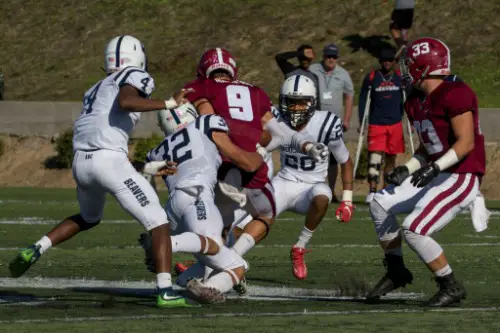
Football in the U.S. didn’t come out of nowhere—it evolved from rugby and soccer, which were imported from Britain. Early American colleges modified the rules in the late 19th century, creating a new game in the process. The forward pass, touchdowns, and protective gear were innovations, but the foundation was borrowed. Americans like to claim it as homegrown, ignoring the British influence.
Walter Camp, often called the “Father of American Football,” formalized many rules, but his work was adaptation rather than creation. The sport’s early popularity was collegiate, mirroring British school sports culture. Gradually, professional leagues emerged, cementing football’s national identity. But deep down, it’s a heavily Americanized version of an imported game.
8. Apple Pie
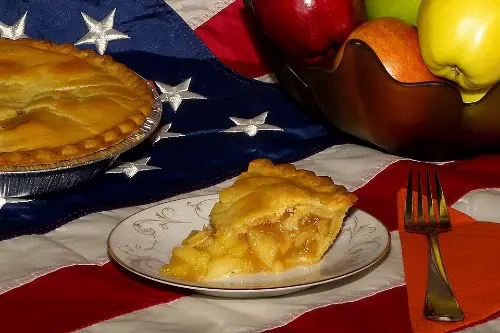
“America runs on apple pie” is a famous saying, but pie itself predates the U.S. by centuries. European settlers brought pie-making techniques from England, the Netherlands, and France. Apples were abundant, so using them as a filling was practical. The phrase “as American as apple pie” is more patriotic marketing than culinary originality.
Before it became a symbol of Americana, pies were savory or used different fruits entirely. The classic cinnamon-spiced sweet apple pie is largely an American twist. Its widespread association with national identity came through media and advertising. Essentially, the U.S. borrowed the idea and claimed it as cultural shorthand.
9. Bagels
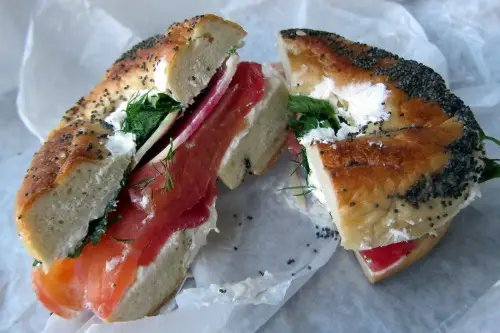
Bagels are often thought of as a quintessential New York snack, but they came from Jewish communities in Eastern Europe. Polish Jews popularized the ring-shaped bread, and immigrants brought it to America in the late 19th and early 20th centuries. The bagel’s dense texture and boiling method remained intact, but toppings and flavor varieties were expanded. Americans embraced it and marketed it as a cultural staple.
The bagel-with-cream-cheese combination became iconic in the U.S., a departure from traditional European fillings like lox or poppy seeds. New York bakeries perfected and mass-produced it. Today it’s “American” in identity, though the recipe traveled across continents. It’s a delicious example of cultural adaptation.
10. Yoga

Many Americans think of yoga as an American wellness trend, but it has roots in ancient India. Practices like asanas, meditation, and breathing techniques date back thousands of years. U.S. enthusiasts in the 20th century adapted yoga for fitness and stress relief. While popularized as a modern lifestyle tool, its origin is firmly Eastern.
American versions often emphasize exercise over spiritual aspects. Yoga studios and online classes stripped or simplified many traditional components. What is marketed as “modern yoga” is more of a rebranding than an invention. Yet, Americans sometimes claim originality due to its mainstream success.
11. Pretzels
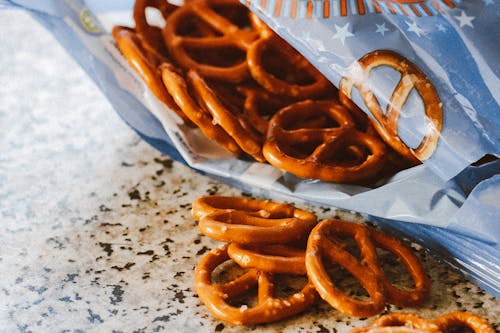
Pretzels are closely associated with American snack culture, particularly Pennsylvania, but they originated in Europe. Monks in Germany and Italy made them in the Middle Ages, often as religious symbols. German immigrants brought pretzel recipes to Pennsylvania in the 1700s. Americans then popularized soft pretzels as street food, embedding them in regional identity.
The U.S. version often emphasizes size, shape, and flavors like salted or cinnamon. Pretzel sales skyrocketed at ballparks and fairs, branding it as an American snack. While the idea came from Europe, marketing gave it local flavor. Americans transformed it from a monastic treat into a mass-consumed staple.
12. Ice Cream Cones

Ice cream itself isn’t American, but the cone craze is often claimed as U.S. ingenuity. Early forms of ice cream existed in China, Italy, and France. The waffle cone became popular in the U.S. after 1904, when a vendor at the St. Louis World’s Fair rolled waffles into cones to serve ice cream. Americans quickly adopted it, creating a cultural image of ice cream in cones.
Before this, ice cream was served in bowls or cups in most places. The cone innovation combined convenience and novelty, making it portable. Over time, it became inseparable from American summer culture. Still, the idea of frozen sweet treats is centuries older than the cone.
13. Tater Tots
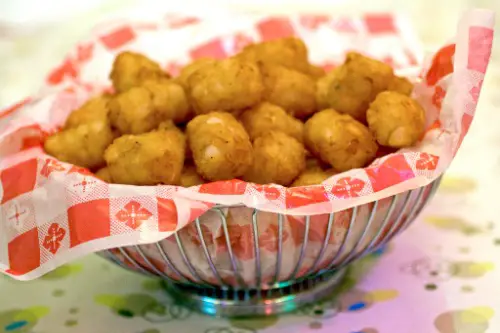
Tater Tots feel like a uniquely American invention, but the concept has roots in Scandinavian potato dishes. Grated and fried potatoes were common in Northern Europe long before 1953. Ore-Ida in Oregon patented Tater Tots by shaping and deep-frying leftover potato scraps. While the branding is entirely American, the cooking method isn’t.
This snack became a school lunch and diner staple, giving it cultural weight. Kids and adults alike think of it as American comfort food. But it’s basically a clever packaging of a European technique. Innovation met marketing, and suddenly it felt homegrown.
14. Croissant

Many Americans associate croissants with French cafés, but the pastry’s story starts elsewhere. The kipferl, a crescent-shaped pastry from Austria, existed for centuries. The French refined it with laminated dough to make it flakier, but the original shape and concept were Austrian. When Americans adopted it, they often assumed it was purely French.
Bakeries in the U.S. leaned heavily into the “French” branding. The buttery, airy croissant became part of American brunch culture. Its history shows how origin stories can be simplified for marketing. What Americans love and claim as French is actually an international culinary collaboration.
This post 14 Times America Copied Another Country but Claimed It as Original was first published on American Charm.


